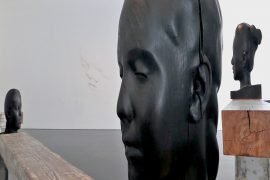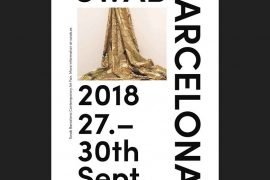How did you come to the art world?
I think that everyone who comes to the art world is a collector first; they begin with a passion for painting, sculpture or whatever they like, and little by little they become acquainted with the scene, and the way galleries work. I was a collector and I realized that there were certain flaws in the business. To begin with, I tried to help some young artists who I thought were interesting. I did some patronage first, and then that became a gallery, then a bigger gallery, and now it is my lifetime professional project.
How has the gallery business evolved?
The world of galleries in the digital age is totally different from the one we knew before. Today, information flows everywhere and people can see everything that happens in the world through the internet. What was needed was a much more comprehensive model of a gallery. To be able to offer the client something more than just pieces of art: a concept, a style, a way of life. Something that goes beyond the classic visual arts. That’s why we’ve incorporated architecture, design, furniture. What we sell is a broader idea of the concept of art. That’s why I think we are a somewhat unusual gallery, although today it’s a trend that spreading. There are many galleries that are moving into this as they understand that what you present at an exhibition is no longer a surprise, because it has already been seen via the networks. And what they suggest is a more integral, comprehensive concept.
How have you managed to achieve visibility in the international market?
As the gallery has grown, we have been able to do ever bigger projects incorporating better-known artists and pieces, and the gallery has gained international recognition, which was something that mattered a lot to us. Today, the gallery deals up to 60% with markets outside Spain. This is a very important aspect for us. It is a model of gallery that is being watched very closely.
What’s the situation in the gallery world right now? Where does it stand?
It depends what we are talking about: one thing is the galleries in Spain, and another is the gallery business in general. In Spain, the art market is small. There are very few collectors, few connoisseurs and very few art critics. It is difficult to create a corps of outstanding artists. This makes it all a bit baffling. Spanish gallery owners must understand that their market is the world. And you can only survive if you make a broad, clearly international offer. We do about fifteen fairs a year. We are present in Paris, London, New York, Stockholm, Miami… And that makes the customer base and the people who know about the gallery increasingly broad. If you do not internationalize, it is very difficult to survive with the domestic market. Very difficult!
Why? Aren’t there any collectors any more? Isn’t anyone buying much art?
After the crisis everything changed. From 2000 to 2008 there were strong, powerful collectors who invested a lot in art, and after the crisis they vanished. Now there is a new buyer, one between 35 and 45 years old, with a lesser purchasing power than before, but perhaps with a greater curiosity, who is staking on new, emerging artists. The market has changed and has become very democratic. Today everyone is a potential buyer of art.
What’s your relationship with the artist like? What’s your role?
I try to play the devil’s advocate, saying what I think is wrong, and not so much applaud success, which is the merit of the artist. But I do warn them when I think there is something that blurs their work or when they seem to be losing their way, even though sometimes the artist does not like it and it causes more conflicts than anything. But I think the role of the gallery owner is to go ahead and tell them when they see that there is something that isn’t working. Afterwards, the artist doesn’t pay attention, and if he considers that that’s the way, I support and defend them. I’m a gallerist who sticks his nose in the artist’s kitchen.
You often refer to the concept of “simplicity”: why are you so interested in simplicity?
It is one of the gallery’s guidelines. Simplicity in all its aspects. I like the simplicity in the production of the artists’ pieces and in their presentation. I like that the link between the artist and us, and us and the client, is clear and simple. I believe there should be no obstructions or barriers. It is about making it easy, making it possible for whoever sees it, in whom it generates a desire, to attain it. I like the concept of simplicity, not only in art but also in life. Simplicity is basic for things to flow and work out.





















